In our daily lives, we’re constantly exposed to various uncertainties and potential misfortunes—from minor fender benders to major health crises. While we can’t eliminate these risks entirely, we can strategically protect ourselves and our assets. This is where insurance and risk management come into play. They are two sides of the same coin: risk management is the overall strategy, and insurance is a key tool within that strategy.
What is Risk Management?
At its core, risk management is the process of identifying, assessing, and prioritizing risks, followed by a coordinated effort to minimize, monitor, and control their impact. For an individual, this means taking a proactive approach to potential threats to your financial well-being.
There are four primary strategies for managing risk:
- Risk Avoidance: This is the most straightforward approach. You simply choose not to participate in an activity that carries a certain risk. For example, if you’re concerned about a car accident, you might choose to use public transportation instead of driving. While effective, this approach can be impractical and limit your life experiences.
- Risk Reduction: This involves taking steps to minimize the likelihood or severity of a loss. Installing a home security system to deter burglaries, maintaining your car to prevent breakdowns, or adopting a healthy lifestyle to reduce the risk of illness are all examples of risk reduction.
- Risk Retention: This is when you consciously choose to accept the potential for loss and bear the financial burden yourself. You might decide to “self-insure” for small, predictable expenses, like a broken phone screen, by having an emergency fund set aside.
- Risk Transfer: This is the most common form of risk management and is the primary function of insurance. You pay a premium to an insurance company, which then assumes the financial risk of a specific loss. In a sense, you are transferring your risk to the insurer.
The Role of Insurance
Insurance is a contract, or policy, that provides financial protection or reimbursement against a specified loss. It works on the principle of pooling resources. Many individuals pay premiums into a shared fund, and when one of them suffers a covered loss, they are compensated from that fund.
Key Types of Insurance for Individuals
Understanding the different types of insurance is crucial to building a robust personal risk management plan.
- Health Insurance: This is arguably one of the most critical types of insurance. Health insurance protects you from the high costs of medical care, including doctor visits, hospital stays, prescription drugs, and other services. Without it, a single medical emergency could lead to significant debt.
- Auto Insurance: If you own a car, auto insurance is often a legal requirement. It provides financial protection against physical damage or bodily injury resulting from a car accident. Most policies include coverage for liability (damage you cause to others) and collision/comprehensive (damage to your own vehicle).
- Homeowners or Renters Insurance: This protects your most valuable assets—your home and personal belongings.
- Homeowners insurance covers damage to your house and its contents from events like fire, theft, or natural disasters. It also typically includes liability coverage if someone is injured on your property.
- Renters insurance serves a similar purpose for those who rent, covering personal belongings and providing liability protection, but it does not cover the building itself.
- Life Insurance: Life insurance provides a financial safety net for your loved ones if you were to pass away. It pays a lump sum, known as a death benefit, to your designated beneficiaries. This money can be used to cover funeral expenses, pay off debts, replace lost income, or fund future needs like a child’s education. The two main types are term life insurance (for a specific period) and permanent life insurance (for your entire life).
- Disability Insurance: This is a vital but often overlooked type of insurance. It replaces a portion of your income if you become unable to work due to a disability from an illness or injury. There are two main types: short-term disability (covers a few months) and long-term disability (covers a longer period, sometimes until retirement).
- Umbrella Insurance: As the name suggests, this policy provides an extra layer of liability coverage beyond the limits of your homeowners and auto policies. It’s particularly useful for high-net-worth individuals or those with significant assets to protect from a major lawsuit.
Building Your Personal Risk Management Plan
Now that you have a grasp of the concepts, let’s look at how to build your own plan.
- Identify and Assess Your Risks: Start by making a list of potential financial threats. Think about your life stage, assets, and responsibilities. Are you a new homeowner? Do you have a family that depends on your income? What is your health history? Consider risks like a job loss, a medical emergency, a car accident, or a natural disaster.
- Evaluate Your Current Protections: Review your existing insurance policies. Do you have adequate health coverage? What are the limits on your auto and home policies? Do you have an emergency fund? This step helps you identify any gaps in your current protection.
- Implement Risk Management Strategies: Based on your assessment, decide which risks to avoid, reduce, retain, or transfer.
- Avoid: Don’t buy a home in a flood zone if you want to avoid that risk.
- Reduce: Install a fire alarm system and maintain it.
- Retain: Build an emergency savings account to cover a minor car repair.
- Transfer: Purchase life, disability, health, home, and auto insurance to transfer the financial burden of major losses.
- Review and Adjust: Your life circumstances will change over time. Review your risk management plan at least once a year. Getting married, having a child, buying a home, or changing jobs are all events that should prompt a review of your insurance needs.
Conclusion
Navigating the complexities of life requires more than just optimism—it requires a solid plan. Insurance and risk management are not just for businesses; they are essential tools for individuals to build a resilient financial future. By understanding the risks you face and strategically protecting yourself with the right insurance policies, you can build a safety net that provides peace of mind, allowing you to focus on your goals without the constant worry of an unexpected financial crisis.







